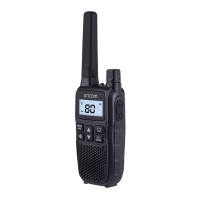28
Channel Frequency Table
* The primary use for these channels is repeater operation using 750
kHz offset. Channels 1-8 and 41-48 inclusive are used for mobile
reception and channels 31-38 and 71-78 for mobile transmission. In
addition, any designated repeater channel may be used for simplex
operation in areas where it is not used for repeater operation.
† Speech telephony shall be inhibited on these channels.
‡ At the time of production, Channels 61, 62 and 63 are guard channels
and are not available for use.
Channel 5 and 35 (paired for Duplex repeaters) are reserved as
emergency channels and should be used only in an emergency.
CTCSS and DCS will not operate on channels 5 and 35.
A list of currently authorised channels can be obtained from the
ACMA website in Australia and the MED website in New Zealand.
Channel 11 is a calling channel generally used to call others and
channel 40 is the customary road vehicle channel.
Once contact is established on the calling channel, both stations
should move to another unused “SIMPLEX” channel to allow others
to use the calling channel.
Channels 22 and 23 are for Telemetry and Telecommand use, voice
communications are not allowed on these channels by law.
Channel 9 and above are the best choices for general use in Simplex
mode.

